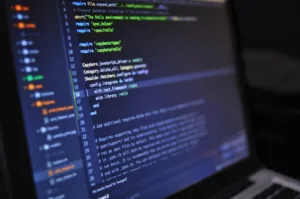
The Trojan.Win32.CVE20188120.E malware represents a persistent threat leveraging CVE-2018-8120, a privilege escalation vulnerability in Windows systems. This analysis provides security professionals with actionable intelligence about the malware’s characteristics, attack patterns, and mitigation strategies while maintaining appropriate disclosure boundaries.
Executive Summary for Security Leaders
This Windows privilege escalation threat exploits CVE-2018-8120, a vulnerability in the Win32k component that allows attackers to execute arbitrary code in kernel mode. The malware typically arrives as a secondary payload delivered through established attack chains rather than as a primary infection vector. While current infection rates remain relatively low according to Trend Micro’s threat intelligence, the potential impact warrants attention due to its high damage potential on unpatched systems.
Key characteristics security teams should note include its use in multi-stage attacks, targeting of legacy Windows platforms, and frequent pairing with remote access trojans like njRAT. Microsoft’s security advisories rate this as a significant privilege escalation vector that was patched in May 2018 but continues to appear in targeted attacks.
Technical Analysis of the Exploit Mechanism
CVE-2018-8120 represents a critical flaw in how Windows handles objects in memory through the Win32k component. Successful exploitation allows attackers to escalate privileges from user-level access to kernel-mode execution. Research from Trend Micro demonstrates how this vulnerability has been weaponized in exploit kits like Capesand, often serving as an intermediate step between initial compromise and final payload delivery.
The malware exhibits several notable behavioral patterns according to Microsoft’s threat encyclopedia. It typically avoids direct initial infection, instead relying on being dropped by other malware or downloaded through drive-by attacks. Security teams monitoring for this threat should pay particular attention to processes attempting to manipulate Win32k objects or exhibiting sudden privilege escalation patterns.
Attack Chain and Real-World Deployment
Analysis of live attack chains reveals consistent patterns in how adversaries deploy this exploit. Securelist’s research on related campaigns shows attackers typically follow a four-stage process: initial compromise through phishing or exploit kits, download of intermediate payloads, privilege escalation using CVE-2018-8120, and finally execution of the primary malicious payload.
One documented case involved the Capesand exploit kit delivering an initial binary (mess.exe) which then downloaded and executed the privilege escalation component before ultimately deploying njRAT through njcrypt.exe. This multi-stage approach demonstrates how the exploit serves as an enabler for more damaging follow-on activities rather than acting as the primary payload itself.
Detection and Mitigation Strategies
Effective defense against this threat requires a layered approach combining technical controls and security policies. Microsoft Defender provides native detection capabilities for this exploit under the signature “Exploit:Win32/CVE-2018-8120.A”, while Trend Micro’s solutions detect related components with signatures like “Trojan.Win64.CVE20188120.D”.
Critical mitigation measures include:
- Applying Microsoft’s security update for CVE-2018-8120
- Implementing application whitelisting to prevent execution of untrusted binaries
- Monitoring for suspicious process behavior and privilege escalation attempts
- Restricting network connections to known malicious endpoints associated with these attacks
Strategic Implications for Security Teams
This threat highlights several important considerations for enterprise security programs. First, it demonstrates how vulnerabilities patched years ago continue to provide value to attackers when organizations delay updates. Second, it shows the increasing sophistication of attack chains where privilege escalation serves as a critical pivot point between initial access and final objectives.
For defensive teams, the malware underscores the importance of comprehensive monitoring that extends beyond initial infection vectors to include privilege escalation patterns and lateral movement techniques. The continued appearance of this exploit in real-world attacks years after patching serves as a reminder that vulnerability management programs must account for legacy systems that cannot be immediately updated.
Conclusion and Security Recommendations
While Trojan.Win32.CVE20188120.E doesn’t represent a novel attack technique, its persistence in the threat landscape warrants ongoing attention. Security teams should prioritize patching vulnerable systems, implement controls to detect privilege escalation attempts, and maintain awareness of how known vulnerabilities continue to be exploited in evolving attack chains.
Organizations maintaining legacy Windows systems should particularly focus on compensating controls where immediate patching isn’t feasible. The malware’s use in multi-stage attacks reinforces the need for defense-in-depth strategies that address each phase of the cyber kill chain rather than focusing solely on initial infection prevention.






